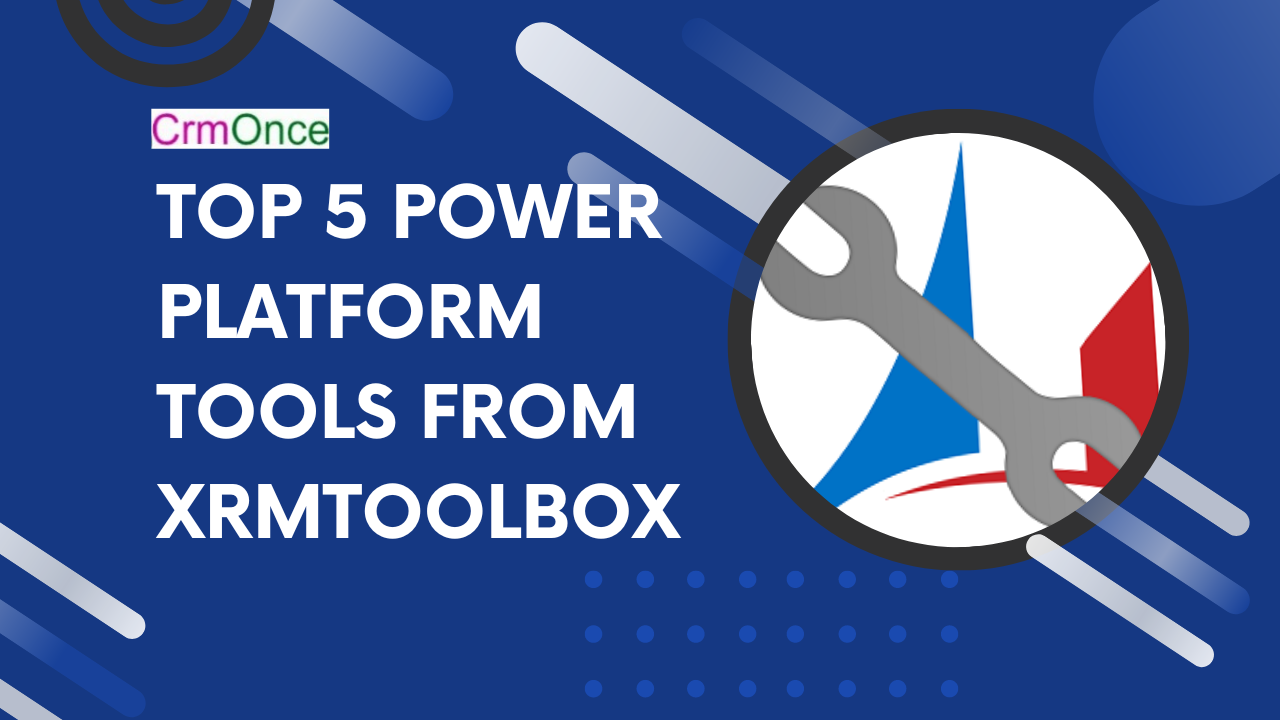XRMToolBox Introduction :
In order to help developers work more efficiently, the CRM community built the open-source framework XRMToolBox, which allows tool sharing and has a collection of practical tools.
It is possible to use tools in a Windows application that connects to Microsoft Dynamics CRM or 365 and offers a User Interface to make task operation, configuration, and customization easier.
fetch xml builder
This is one of the resources in this framework that I like the best. It enables users to create queries using the Power Platform and Microsoft Dataverse. It enables users to build and run queries against D365, Power Apps, and Microsoft Dataverse.
In three key areas, this tool can be helpful.
There are three main ways that this tool can help. constructing queries: using aggregates, outer joins, and updated queries to update existing views.
searching the Dataverse for data that isn’t readily visible in the user interface, such as system or internal entities, hidden attributes, joins on other fields, and relationships
Generating code for C# Query Expression, WebAPI query string, SQL query, Power Automate list Records, and many other types of queries can help developers.
This tool can read data from Microsoft Dataverse and D 365/CRM to help with entity and attribute selection.
Fetch XML’s strength lies in its ability to quickly visualise data from one or more tables, filter it, and automatically generate XML for use in the future.
Bulk Data Updater
When a new field is created, this feature is frequently used to allow users to update data in bulk. It also enables developers to change field values for existing records before the data is used in the environment.
With the help of XRMToolBox, users can connect tools so they can use multiple tools to perform operations on data.
Bulk Data Updater has a feature called Fetch XML Builder that enables users to capture the necessary dataset and import it into the tool to update specific records.
Additionally, you can assign, delete, and set the state of a record using this tool. This tool allows you to trigger plugins and workflows.
Attribute Manager
The type of an attribute can be updated, deleted, or given a new name using the attribute manager. Power Platform tools do not have this functionality.
We have all been there when a requirement changes and we need to update an attribute’s type. We can update the type of the field using Attribute Manager rather than removing the entire field from the table. This tool allows developers to migrate data and convert attribute types within a given schema.
Steps are automatically generated by Attribute Manager in order to carry out these operations. The user has the ability to change these steps to produce the desired results.
Data Transporter
Developers occasionally need to replicate data in a lower environment for bug troubleshooting in the production environment.
Records for entities can be moved between environments using the Data Transporter tool. There are other methods for moving data, such as using Excel to import and export data, but these methods can be very challenging when dealing with large amounts of data.
The user only needs to provide the source and target environments, the entity, and the chosen fields for the data that needs to be transported when using Data Transporter. Fields are created if they are not present in the destination environment.
This tool can also be used to visualise how different environments affect an entity’s behaviour.
Metadata Document Generator
Any newly developed system must have documentation in order for a project to be successful. Handover and Business as Usual (enhancements, bug fixes) documentation are crucial during knowledge transfer. You can document every aspect of a Table using the metadata document generator (entity). Field information, Audit information, Field level security information, Attribute locations in Form, and Requirement level information are all available for the document. The user has the choice to create an Excel workbook or a Word document.

